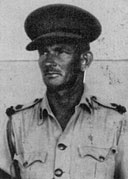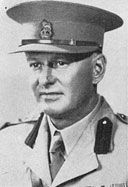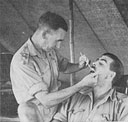
7
Preparation for Action
El Wak provided proof that 1st S.A. Infantry Brigade Group and 24th Gold Coast Brigade were trained and fit for bush warfare, but it could not eliminate the water shortage and lack of roads for a co-ordinated move up to the border of Italian Somaliland. Before 11th and 12th African Divisions could occupy Kismayu or close up on the defence line of the Juba, much had still to be done, and South African field and road construction companies were pushing ahead with the work, whilst East Africa Force grew in strength. (See Appendix 8.)
The 25th Road Construction Company, S.A.E.C. was troubled by cases of fever and dysentery, but on nothing like the scale experienced on the coast, where 1st Anti-Aircraft Brigade, S.A.A., after reaching a peak with 2 officers and 92 other ranks in hospital on 20 September, still had 50-70 per day in hospital throughout December 1940. The Brigade was 419 under strength on its own war establishment, and no less than 9 officers and 694 other ranks short of actual requirements with 4th Anti-Aircraft Battery, S.A.A. (Major Harry Scholtz) attached. Here, within one unit, was an example not only of the South African manpower problem but also of the danger of fever, which had prompted General Wavell to allow only one South African Brigade Group to operate along the Juba River front.
By the end of January 1941, 16th Field Company, S.A.E.C. had moved to Bura and were preparing forward defensive positions, bridging the river and developing the water supplies. The company had 56 men in hospital, and malaria cases had totalled 64 since the unit's arrival in East Africa. The road was now complete as far as Galmagalla, where 25th Road Construction Company, S.A.E.C. had set up headquarters. The whole company was working hard to push the road through to Colbio.
Meanwhile, 26th Road Construction Company, S.A.E.C. (Major W. R. Greathead) was pushing another road through from Garissa for some 70 miles north-east to Hagadera on the route to Afmadu, the key meeting-point of the main tracks between the frontier and the Juba River. Towards the end of January a detachment under Lieutenant Warren from 27th Road Construction Company, S.A.E.C. also moved from Thika to Garissa and got busy repairing the approaches to the pontoon bridge over the Tana River before a small party with two road-graders, a bulldozer and two trucks was attached to 22nd East African





